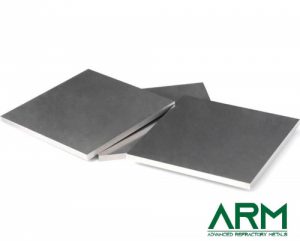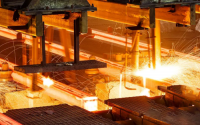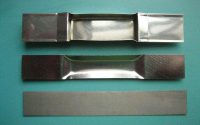Nickel-Rhenium Superalloys: High-Temperature Resistant Materials
Introduction
In aerospace and industrial engineering, the demand for materials that can withstand extreme conditions is ceaselessly increasing. Nickel-rhenium superalloys have emerged as pivotal materials in these sectors because they can maintain structural integrity at high temperatures.

This article discusses the properties, applications, and manufacturing processes of nickel-rhenium superalloys. Hope that you can learn about their significance in modern engineering.
Properties of Nickel-Rhenium Superalloys
Nickel-rhenium superalloys are notable for their outstanding high-temperature capabilities. These alloys can operate efficiently in temperatures often exceeding 1000°C. That’s crucial for components exposed to the severe heat of jet engines and industrial turbines. These high-temperature properties include:
- High-Temperature Strength: These superalloys are designed to retain considerable strength at temperatures where most metals would weaken or melt. This strength is essential for aerospace engines and power generation turbines.
- Corrosion and Oxidation Resistance: Nickel-rhenium superalloys exhibit excellent resistance to corrosion and oxidation, even under extreme environmental conditions. This high-temperature resistance is crucial for applications in harsh environments. It also helps ensure long-term durability and reduce maintenance costs.
- Enhanced Wear Resistance: The high-temperature resistant material’s durability under physical stress is remarkable. They withstand wear and tear better than many other metals. These components can operate under high stress and temperatures.
- Creep Resistance: The addition of rhenium significantly improves the creep strength of nickel alloys. Creep, the tendency of a solid material to move slowly or deform permanently under mechanical stresses, is greatly minimized.
Related reading: A List Of Heat-Resistant Materials
Applications in Aerospace and Beyond
The primary application of nickel-rhenium superalloys is in the aerospace industry. Jet engines, particularly those in military and commercial aircraft, benefit immensely from the high-temperature resistance and strength of these superalloys. These high-temperature resistant materials are typically used in turbine blades, exhaust nozzles, and other engine components that require high performance under stress and temperature.
Beyond aerospace, nickel-rhenium superalloys find applications in power generation and chemical processing. In power plants, these high-temperature resistant materials are used in the hot sections of gas turbines. Their resistance to high-temperature oxidation and creep makes them suitable for long-term operation in these environments. Similarly, the chemical processing industry utilizes these superalloys for equipment that must resist corrosion from acids, bases, and other harsh chemicals.
Manufacturing Process
The manufacturing of nickel-rhenium superalloys involves complex metallurgical processes. The initial phase includes the melting of nickel along with rhenium and other alloying elements such as chromium, molybdenum, and cobalt. This is typically done in a vacuum induction melting (VIM) furnace to ensure purity and uniformity.
Following the melting process, the alloy undergoes a series of heat treatments and mechanical working steps to enhance its physical and mechanical properties. Forging, rolling, and annealing are common processes used to refine the grain structure and improve the overall strength and ductility of the alloy.
Challenges and Innovations
Despite their numerous advantages, these superalloys present certain challenges.
- The high cost of rhenium is a significant factor since it drives up the price of the end product.
- Moreover, the machining and processing of these superalloys require specialized equipment and knowledge due to their high strength and melting points.
- In response to these challenges, ongoing research and development are focused on improving the efficiency of such high-temperature resistant materials.
- They are also exploring substitute materials that can offer similar benefits at a reduced cost.
Innovations in processing technologies also continue to enhance the performance and application range of these superalloys.
Conclusion
Nickel-rhenium superalloys are essential for applications in high-temperature environments. Their unique combination of strength, resistance, and durability under extreme conditions makes them indispensable in aerospace, power generation, and chemical processing industries. As engineering demands evolve, the development of these high-temperature resistant materials will continue to drive future innovations and applications in materials science.
Advanced Refractory Metals (ARM) stands out as a leading supplier of rhenium products. ARM offers custom materials tailored to the specifications and drawings you provide. Send us an inquiry if you are interested.



